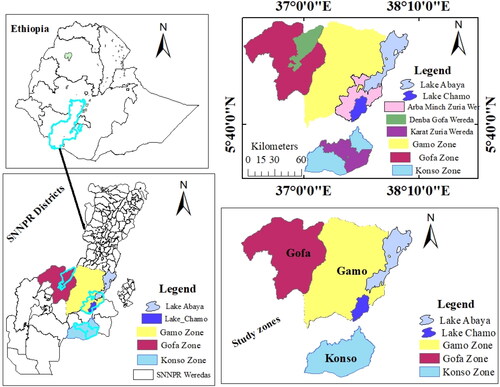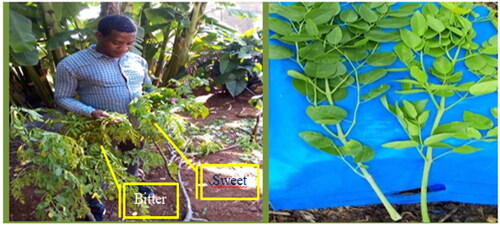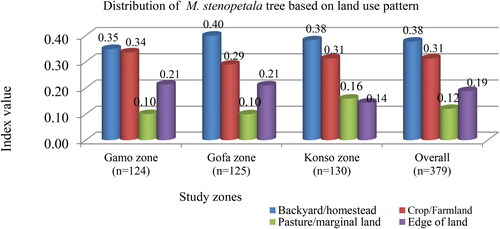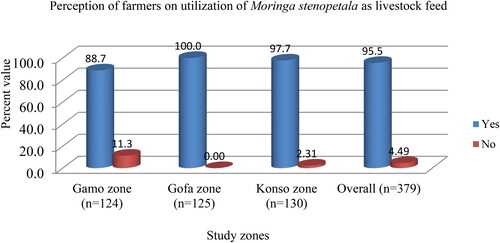Figures & data
Table 1. Socio-economic characteristics of the respondents.
Table 2. Level of education of the interviewed households.
Table 3. Mean ± SE landholding (ha) and use patterns of the households.
Table 4. Livestock species and ownership (mean ± SE) of the households.
Table 5. Feed shortage and coping strategies.
Table 6. Purposes of planting Moringa stenopetala.
Figure 2. Ability of farmers on identifying different types Moringa stenopetala that found in the area.

Table 7. Availability, yield production, and harvesting of Moringa stenopetala.
Table 8. Average number of Moringa stenopetala trees per household in study area.
Table 9. Mean (±SEM) leaf yields (kg DM/tree) of Moringa stenopetala at 1.2 meter height.
Table 10. Utilization practices and favored parts of Moringa stenopetala (MS) as livestock feed.
Table 11. Indigenous knowledge of farmers on medicinal value of Moringa stenopetala (MS).
Data availability statement
Data will be made available from the corresponding author on reasonable request.




